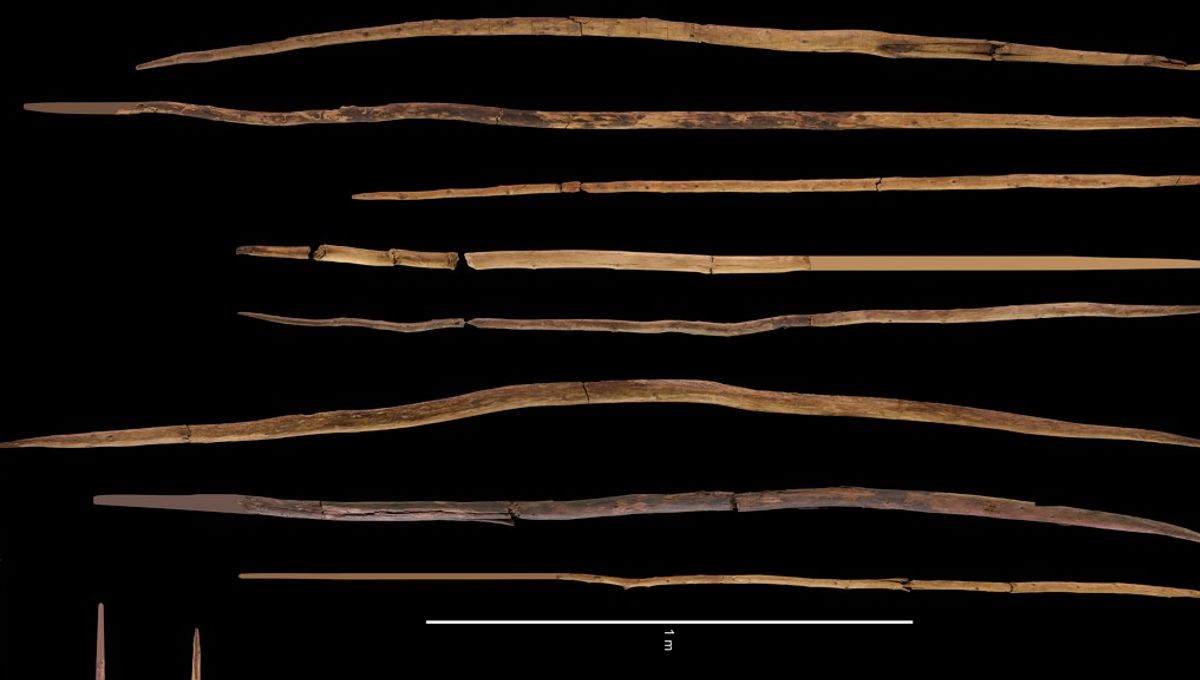
The world’s oldest wooden spears were probably made by Neanderthals around 200,000 years ago and used to annihilate entire families of wild horses, according to a new study. First discovered at the world-famous site of Schöningen in Germany in 1994, the iconic weapons were once thought to have been 400,000 years old, yet fresh analysis suggests that they were probably crafted around the time that ancient humans developed the capacity for collective hunting.
Consisting of nine complete spears, one lance, and a series of other armaments such as throwing sticks, the assemblage is remarkable as it represents the only fully preserved collection of wooden Paleolithic weapons. Based on previous age estimates, researchers had speculated that the ancient items might have been made by a common ancestor of modern humans and Neanderthals known as Homo heidelbergensis.
However, while all prior studies had focused on layers of sediment from beneath the so-called spear horizon, the authors of a new paper were able to analyze the ages of objects from the actual deposits in which the spears were found. In doing so, they determined that the weapons were in fact 200,000 years old – which still makes them by far the earliest artifacts of their kind anywhere on the planet.
Speaking to IFLScience, study author Dr Jarod Hutson explained that the new dating of the assemblage “puts it squarely in the time of Neanderthals.” This is significant because most of what we know about Neanderthal behavior has been gleaned from archaeological evidence dated to the latter part of their time on Earth, between 60,000 and 40,000 years ago.
“[At this point] we start to see that Neanderthals and humans were pretty similar behaviorally, but perhaps they weren’t always that way,” says Hutson. “Maybe their behavior evolved over time, just like modern humans did.”
“What we have at Schöningen is the earlier side of Neanderthal behavior, which fills in a gap that we didn’t have before and gives a very clear picture of what was going on with Neanderthals 200,000 years ago,” he adds. For instance, based on the animal remains found at the site, the study authors conclude that Schöningen was once “an ambush hunting ground at which entire horse family groups were targeted, killed, and butchered.”
“To achieve this level of routine success, hunting forays at Schöningen… must have been wholly collaborative and group-minded efforts motivated by a communal set of objectives,” they write.
The development of spears like those at Schöningen can therefore be interpreted as a key ingredient in the shift towards collective hunting strategies, which appears to have been present in Neanderthals by 200,000 years ago. Given that Homo sapiens was just beginning to establish itself in Africa at around this time, the study’s findings significantly advance our understanding of how early Neanderthals compared to the first modern humans in terms of intelligence and behavior.
“It looks like at least their hunting behavior was probably pretty similar [to ours], and they were able to take down animals of many different sizes with pretty good success,” says Hutson.
It’s also worth noting that while the Schöningen assemblage may represent the world’s oldest complete wooden spears, an even earlier spearhead fragment has been discovered in Clacton, England. This suggests that the ability to hunt with weapons arose long before the Schöningen Neanderthals entered the picture, although it’s hard to say with any certainty how these older hominins accosted their prey.
“The spear from Clacton is 400,000 years old, so it’s very possible that [humans] were hunting with spears 400,000 years ago,” says Hutson. “It’s just this idea of cooperative hunting and the highly social behaviors that we see at Schöningen that maybe did not exist 400,000 years ago.”
The study is published in the journal Science Advances.
Source Link: Neanderthals Used World’s Oldest Wooden Spears To Hunt Horses 200,000 Years Ago